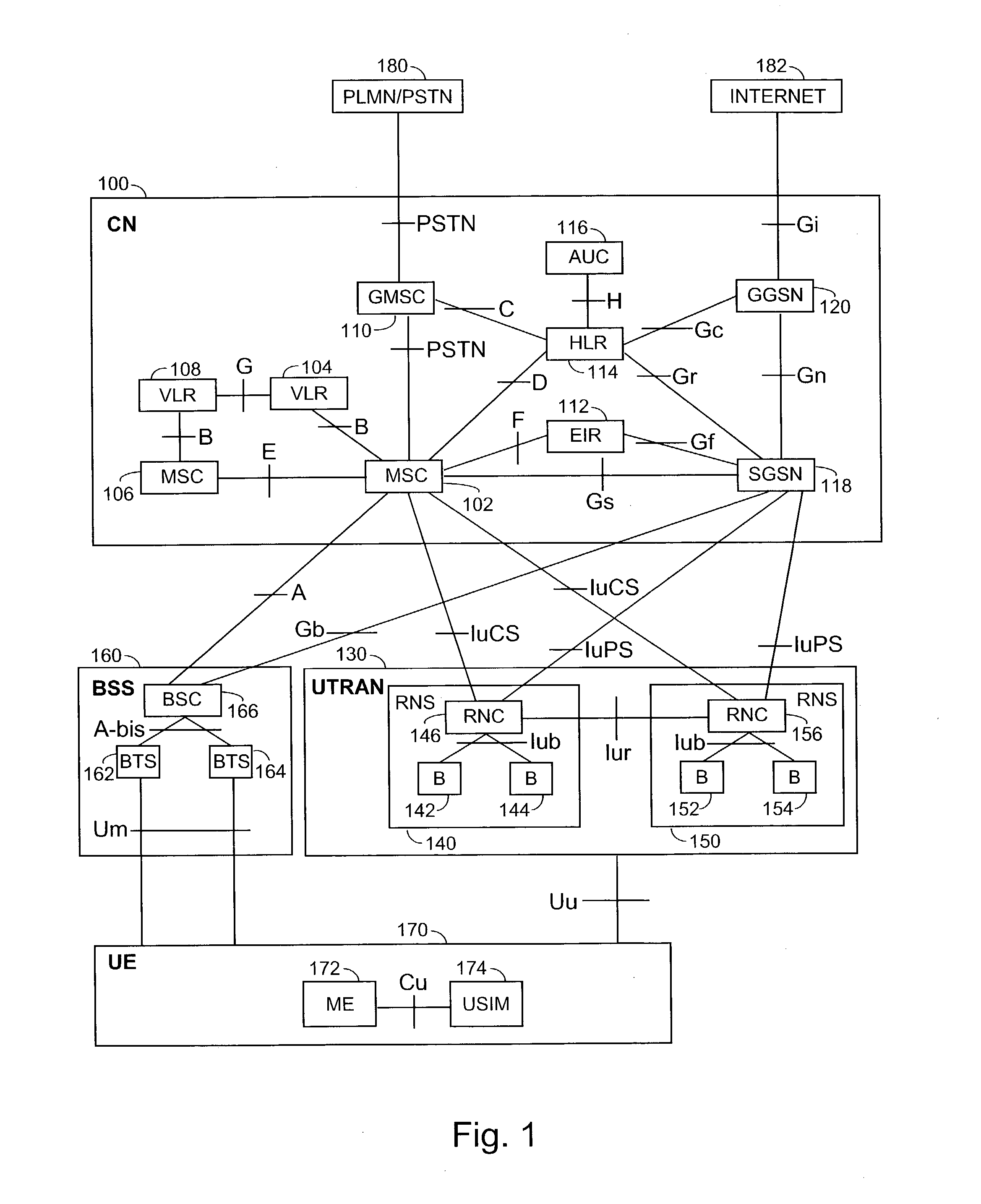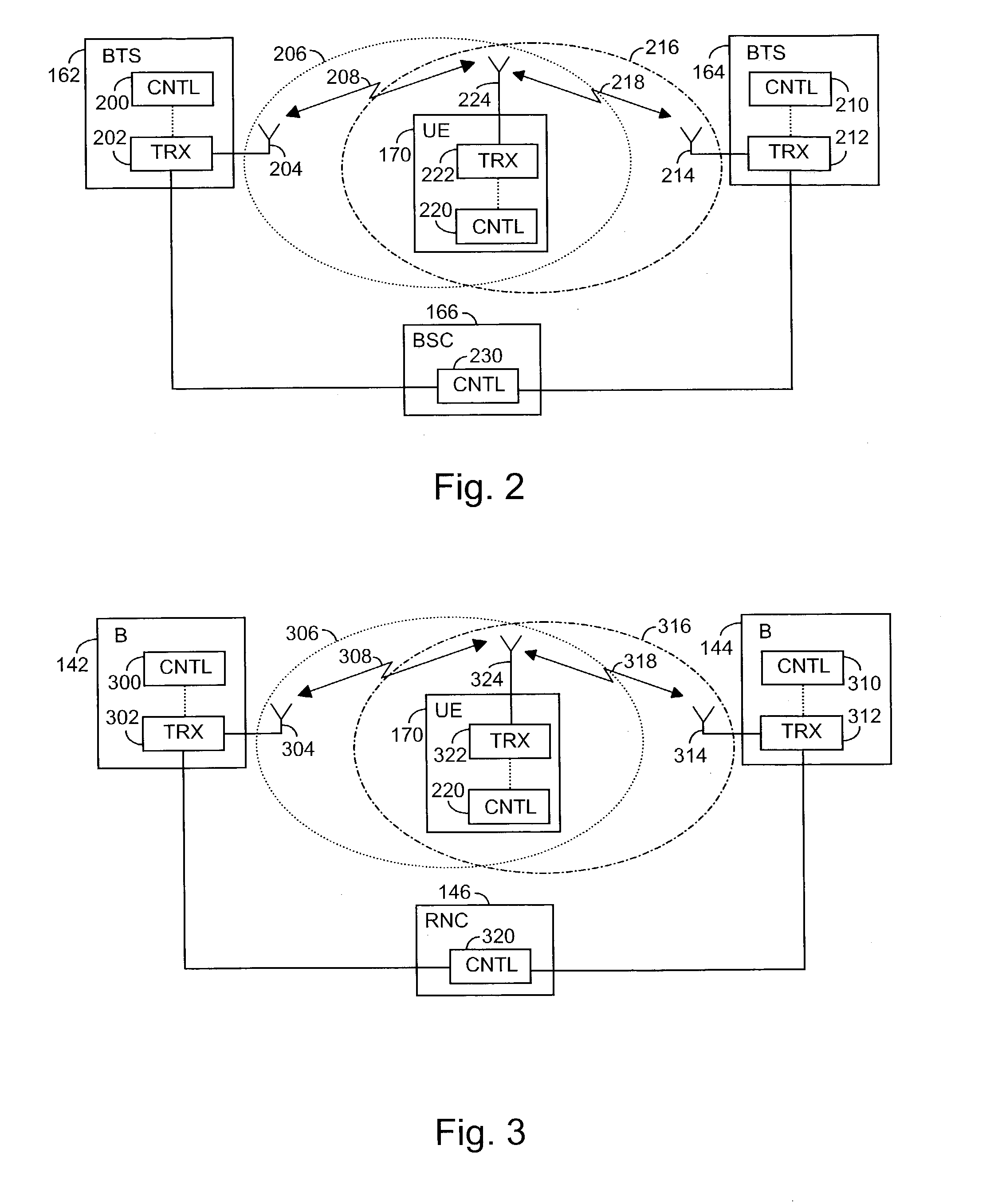Transceiver method in a radio system and a radio system
a radio system and receiver technology, applied in the field of transmission methods in radio systems and radio systems, can solve problems such as interference that may vary, delay in transmission, interference for telecommunication, etc., and achieve the effects of reducing the interference level between signals, improving data rate, and improving reliability
- Summary
- Abstract
- Description
- Claims
- Application Information
AI Technical Summary
Benefits of technology
Problems solved by technology
Method used
Image
Examples
first embodiment
[0063] The first base transceiver station 142 comprises a transceiver unit 302, an antenna 304 and a control unit 300. In the same way, the second base transceiver station comprises a transceiver unit 312, an antenna 314 and a control unit 310. Also the radio network controller 146 comprises a control unit 320. The user equipment 170 also comprises a transceiver unit 322 and an antenna 324 for implementing a radio link, and a control unit 220. The transceiver units 302, 312, 320 utilize WCDMA technology. The antennas 304, 314, 324 and control units 300, 310, 320 can be implemented in the manner described in the
[0064] Use of Polarization Matching in MIMO Method According to the Invention
[0065] Next, the use of polarization matching in the MIMO method according to the invention is illustrated by means of an example. Let us assume that the base transceiver station transmits two different data streams s and z, sending these two different signals through two separate pairs of polarizatio...
embodiment example
[0087] In the following, an embodiment of a transceiver method, i.e. transmitting-receiving method, is studied with reference to FIG. 4a. In the example of the figure, the transceiver of the first type can be user equipment 170, typically a mobile station MS of a radio system, for example a mobile phone, and the transceiver of the second type is a base transceiver station of a radio system or a node B. The transceiver of the first type can also be for instance a portable computer or another terminal of a radio system. The use of the method is not restricted to such a situation, however, but can also be applied to an opposite case, where the transceiver of the first type is a base transceiver station in a radio system and the transceiver of the second type is a mobile station in a radio system.
[0088] The method is started from 400a. In 402a, at least one signal is transmitted by using a mobile station and at least one antenna, the signal being received by the base transceiver station...
PUM
 Login to View More
Login to View More Abstract
Description
Claims
Application Information
 Login to View More
Login to View More - R&D
- Intellectual Property
- Life Sciences
- Materials
- Tech Scout
- Unparalleled Data Quality
- Higher Quality Content
- 60% Fewer Hallucinations
Browse by: Latest US Patents, China's latest patents, Technical Efficacy Thesaurus, Application Domain, Technology Topic, Popular Technical Reports.
© 2025 PatSnap. All rights reserved.Legal|Privacy policy|Modern Slavery Act Transparency Statement|Sitemap|About US| Contact US: help@patsnap.com



